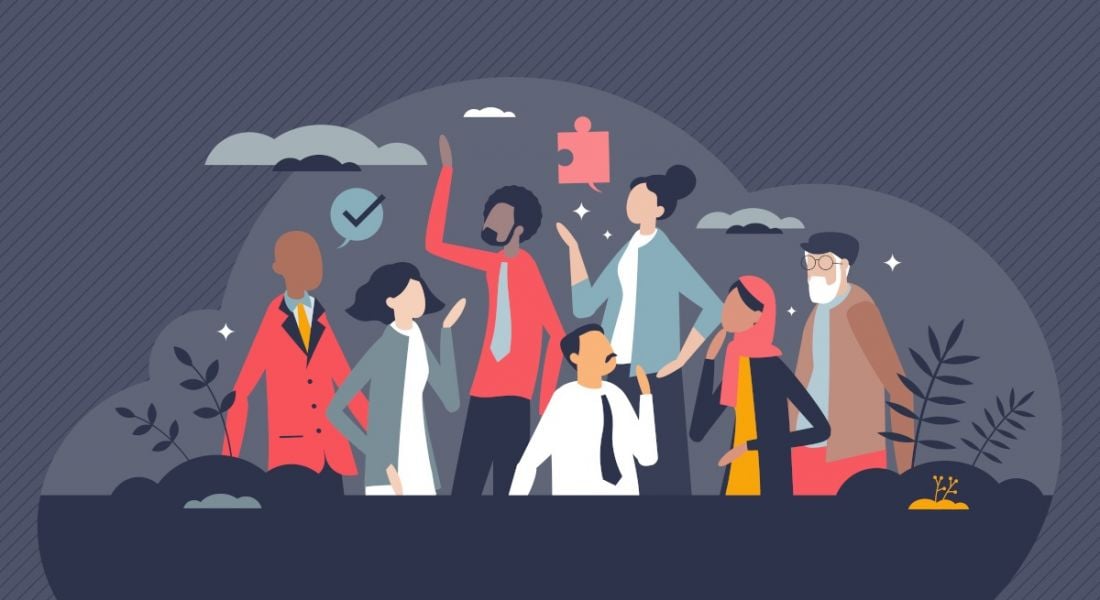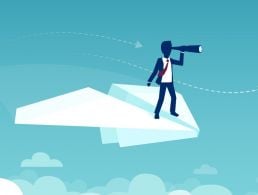With five different generations in the current workforce, Hays’ Simon Winfield examines the challenges facing leaders and advises them on how best to embrace it.
For the first time in recorded history, there are possibly five different generations of people in the workforce, from the last of the ‘Silent Generation’ born around 1945 who may still be working to the oldest from Gen Z currently in their early 20s.
All of these people have very different experiences, values, needs and ways of working, but for companies that have to contend with these differences, it could be seen as a challenge.
To get a better handle on the multigenerational workforce, we spoke to Simon Winfield, CEO of Hays UK and Ireland. While having so many generations actively working can come down to longer life expectancy and later retirement ages, Winfield said this wide age range is also borne out of employers embracing diversity and inclusion and being more open-minded about the types of people they employ.
“I think they’re adapting to hiring older workers and looking for people in very non-traditional places more than they might have done even five years ago. I think that’s probably quite a pivotal moment in the world of work that we’re now in. It’s probably changing quicker than it has before, and I think it’s a really good thing.”
Not only is the length of service stretching to older generations, but the level of seniority at which you may expect to find certain age groups has also diversified. It will not automatically be a given that entry-level staff are younger, while those at the top are from older generations.
Winfield said that, from his own experience within Hays and its skills and learning business, a large proportion of people are looking at starting their second or even third career, meaning they’re starting at the bottom of a ladder in order to retrain. “We’ve got ex-military, ex-forces and we’ve got [others] coming in at what traditionally would have been entry-level, graduate-level roles in their mid-30s, 40s.”
Differences between generations
One of the biggest mistakes a leader can make is to fall into stereotypical assumptions about age groups. The idea that older people can’t get to grips with new technology is false and ageist, while assuming that younger people from Gen Z are lazy and quietly quitting is equally as disparaging.
However, that’s not to say there aren’t differences that need to be acknowledged. Winfield has noticed the biggest difference is where each generation feels most productive. “I think older generations and actually the younger generations at entry-level feel more comfortable working in the office,” he said.
“Older generations particularly because that’s what they’ve historically been used to and younger generations, because one of the best ways of learning is from other people doing the job.” By contrast, he said a 2023 Hays’ survey found that those aged 30 to 49 years old argue their productivity levels are better when they work from home.
Winfield also said that the way in which managers communicate – and how colleagues communicate with each other – can differ greatly depending on the generation of workers.
“You could be managing the team of people where the youngest person that works for you 17 or 18 years of age and the oldest person that works for you could be in their mid-50s or 60s. And they’re both very different people with very different needs and expectations,” he said.
“I think that poses some quite interesting challenges, [such as] how you communicate to them, not just verbally in that moment, but written words for example, video content, all those sorts of things.”
He spoke about the difference in career longevity. While previous generations may have been thinking about a career that spanned several years or even decades in one company, younger generations move jobs much more frequently.
“This whole job for life, progression is really important [idea], I think that’s rapidly becoming a thing of past,” said Winfield. “I think that presents some quite interesting challenges around business continuity and how do I retain those people?
“If everybody was only here for two years, business continuity becomes a bit of an issue … I think it’s going to happen quite quickly. And I think it actually poses a very real threat to businesses, particularly like ours, where it’s about consulting, it’s about the relationship you have with the customer. If you can’t get that continuity in those relationships, what’s your proposition? How are you going to counter that?”
Advice for leaders
The role of technology undoubtedly plays a role, and while the stereotype we mentioned that assumes older generations can’t get to grips with technology is an outdated concept, it’s still worth acknowledging that younger generations have grown up with more tech around them, which could potentially play into the differences in communication etc.
With the rise of AI and automation in the workplace, will tech widen the generational gap in work or make it smaller? Winfield said the deciding factor of this is not the kind of tech or the volume, but the ease of use.
“Technology inevitably can make things simpler, better, quicker, faster, whatever it might be, but if it’s reliant on heavy user input, then you can lose an awful lot of downtime just in administration of the system,” he said.
“[It’s] how do you integrate things like generative AI to genuinely create efficiencies in the user experience and, as part of that user experience, to make it accessible for all the generations that work for you in the easiest way possible, because I think the easier system is to use and the greater benefit it has to the individual using it to create time, saves efficiencies and all those sorts of things.”
While it’s vital for managers to be considerate of these differences when dealing with a multigenerational workforce, Winfield said it’s important to embrace it too, so that leaders can reap the benefits from – potentially – five different generations.
“We’ve seen directly the benefits of that experience. In some of the teams and projects we’ve worked on, [we’ve seen] visibly the energy or enthusiasm a younger person might bring to the party. We have the diversity of thought that comes across the ‘edge’ generations,” he said.
“I think all generations have got something to learn from the other ones, so encourage it.”
Find out how emerging tech trends are transforming tomorrow with our new podcast, Future Human: The Series. Listen now on Spotify, on Apple or wherever you get your podcasts.




